The Digital Vault: How to Protect Your Business's Ideas in a Connected World
In a world where almost everything has a digital footprint, protecting the intangible assets that power a business—its ideas, its content, its proprietary tools—requires more than just vigilance. It demands a layered, evolving strategy that respects both the law and the ever-changing technologies shaping today’s business landscape. Intellectual property used to be kept behind locked doors and NDA-filled boardrooms, but now it travels in cloud folders, emails, and code repositories. As fast as businesses scale, so too do the threats to what makes them valuable.
Not All Intellectual Property Wears a Trademark
Every business has intellectual property, but it doesn’t always come with a ™ or a ®. Proprietary algorithms, internal processes, marketing strategies, and even customer insights—these are the less obvious yet crucial forms of IP that tend to go underprotected. Startups especially are prone to oversharing in pitch decks or online spaces without understanding what they're giving away. In the digital environment, even a snippet of a shared file or an unprotected backend tool can find its way into the wrong hands. Recognition is the first step: if it gives your business a competitive edge and you created it, it's probably worth protecting.
Limit the Digital Footprint from the Inside Out
One of the lesser-discussed but most effective strategies is managing what employees and collaborators can access—and how. Not every team member needs access to every drive, document, or internal conversation. Using role-based access and regular audits on permissions can prevent leaks before they happen. Insider threats aren't always malicious; they're often just careless. The fewer hands that touch something, the fewer opportunities there are for it to slip through the cracks.
Turn Legal Protections Into a Standard Operating Procedure
Copyrights, trademarks, and patents aren't just legal shields—they're deterrents. Businesses that make protection part of their standard operations send a message to both competitors and would-be infringers: this idea is owned. Registering content and processes might seem tedious, but digital platforms make it easier now than ever. Automating renewal reminders and working with IP attorneys to build a protective wall early in a product's lifecycle pays dividends later. Especially when innovation moves fast, the paperwork should too.
Bring Order to Visual Chaos
Scattered image assets—product photos, infographics, mockups—can create disarray when stored in unstructured folders or passed around through long email threads. Consolidating these visuals into clean, organized PDF files not only preserves image quality but also allows for smoother collaboration across departments or with external partners. PDFs offer a consistent, non-editable format that's easier to archive, annotate, and present when needed. If you're starting with raw image files, using a reliable JPG-to-PDF converter can help streamline the process; here’s a helpful guide on how to convert image to PDF.
Watermarks and Metadata Still Matter
In the arms race of digital theft, small technical details still carry weight. Embedding watermarks, tracking metadata, and logging timestamps on files or assets won’t stop theft outright, but they can be crucial in proving ownership. They also act as quiet warnings: this belongs to someone, and it’s traceable. Visual content, software, and even slide decks can carry these kinds of protections without disrupting user experience. Too many businesses ignore them in the name of clean aesthetics, only to regret it once their work appears under someone else’s brand.
Educate, Then Re-Educate Your Team
Technology changes, and so do the methods people use to exploit it. An annual security training doesn't cut it anymore. Digital IP protection is an evolving discipline, and internal teams need to stay informed. Teaching employees how to recognize phishing attempts, avoid cloud-sharing pitfalls, and handle sensitive data must be ongoing—not one-off. The strongest wall is still vulnerable if those inside don’t know how to use the locks.
Don’t Just React—Proactively Monitor for Infringement
Waiting until someone copies your product, steals your code, or republishes your content is too late. There are now services that monitor the web for duplicate content, stolen visuals, or misused brand elements, and they can be part of a proactive IP protection plan. Setting up alerts, reverse image searches, and trademark watch services isn't paranoia—it’s modern hygiene. Protecting a business’s creativity means watching for signs it’s been hijacked, often in places one wouldn't think to look.
As businesses lean deeper into digital transformation, the very assets that make them unique also become more exposed. Intellectual property isn’t just an abstract legal term—it’s the blueprint for a brand’s success. Protecting it means more than securing servers or drafting contracts. It requires a culture that understands the value of ideas, invests in the right tools, and refuses to assume the digital world plays fair. Because when everything can be copied in seconds, the true currency isn’t just innovation—it’s how well it’s protected.
Discover the vibrant business community of Albertville by visiting the Albertville Chamber of Commerce and explore exciting events like the Little Black Dress Mixer and the Holy Confections Dessert Competition!


